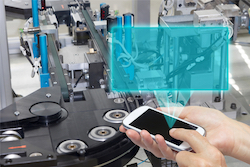Cooperative foundries offer SMEs small-batch production
In pursuit of product commercialisation, European small and medium-sized enterprises (SMEs) are faced with a conundrum. While they need manufacturing facilities to provide electronic components and systems, their markets are usually quite niche and so production tends to be of small lot-sizes. Over the last few years Smart Systems Integration (SSI) has helped get a diverse range of innovations out of the lab and to market. Now it also addresses the challenge of small lot-size production at reasonable cost. The EU-funded SMARTER-SI project was set up to test a new concept for distributed small lot production - the Cooperative Foundry Model (CFM). The systems comprised of ‘building blocks’ of electronic components and functional parts with high Technology Readiness Levels (TRLs) contributed by participating Research and Technology Organisations (RTOs). This modular arrangement offers adaptive production solutions for SMEs. Lowering entry barriers to market for SMEs Smart Systems Integration (SSI) refers to the range of functional systems, such as sensing and data communications, based on microsystems technology (e.g. sensors, actuators, electronics). These are combined for a variety of solutions, such as energy management. Systems are usually embedded into the natural, built, and social environment. They are considered ‘smart’ as they rely on feedback loops, data-sets and algorithms to enable autonomous operation. SSI offers SMEs increased access to options for design, prototype manufacturing, testing and first production. SMARTER-SI sought to maximise this potential with a cooperative approach which pulled the resources of RTOs. As project coordinator Dr Rainer Guenzler, explains, “The idea for a Community Foundry Model was triggered by some research projects which despite their success, did not result in marketable products. The problem being that most SMEs do not need large quantities of hardware systems for their products and commercial foundries cannot justify producing small quantities.” SMARTER-SI CFM combines the expertise of six internationally recognised RTOs, offering SMEs a technological access point for small lot manufacturing of systems (up to a few hundred units) selectable from a catalogue. These building blocks are technological modules such as sensor chips, that are interoperable and can be combined into fully functional systems. The project team designed a test bed for 11 Application Experiments (AEs) to be trailed using the the building blocks. The project succeeded in all cases in delivering dozens of systems to the SMEs, who were in turn able to beta test them amongst their own customers. As Dr Guenzler elaborates, “This is perhaps the most important step to reach the marketplace. To highlight one example: the clutch-brake smart sensor which monitors abrasion not only saves costs and allows predictive maintenance but also demonstrates how machinery can benefit from digitalisation.” Capitalising on Europe’s research excellence The SMARTER-SI project aligns with the ‘Smart Anything Everywhere’ European Commission initiative, established to enable SMEs meet their digital transformation challenges. The approach exploits the modular, multi-disciplinary and multi-scaled nature of SSI to realise and improve a range of innovative products and commercial opportunities. The Cooperative Foundry Model reduced the time from idea to product by a factor of two. In the case of industrial automation, it has been estimated the value added by SSI represents approximately 10 % of the EUR 113 billion global market. Europe is in pole position to leverage its leading RTO research, development and production facilities to win a significant share of this. Looking to the future, Dr Guenzler says, “We’ve had so many promising results from the AEs, such as a device to check food for toxins and allergens. To take these forward the SMEs will now go into small lot manufacturing. For some this will happen in the coming months while others will need more time.”
Keywords
SMARTER-SI, manufacturing, SME, small-batch, production, foundry, automation, microsystems technology, small-lot, smart, module



